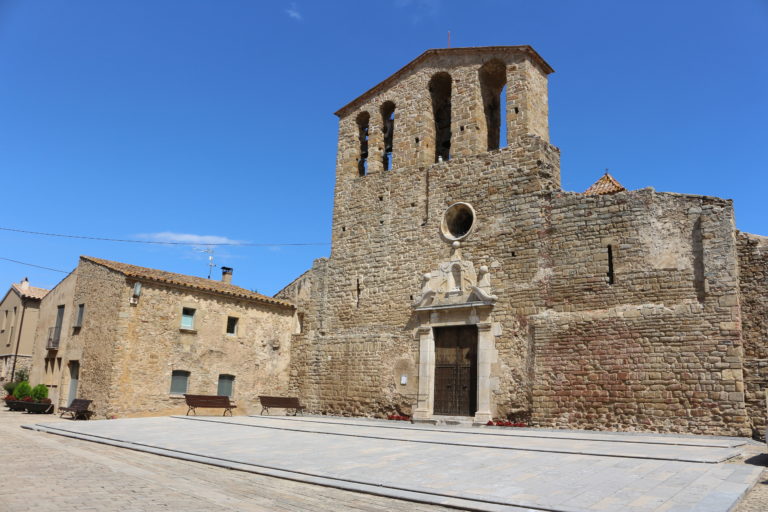Ullastret
-

The municipality of Ullastret, with around 290 inhabitants, extends across a large part of the banks of the River Daró, which runs through the westernmost part of the district. The eastern part was formerly occupied by the old Ullastret pond which was fed by the waters of the Daró and other streams of its basin. This pond was dried up in the 19th century and converted into farmland, but today it still floods in periods of heavy rain.
The village of Ullastret stands on a slight rise. Its has a clearly medieval structure, with very well-conserved walls encircling a small nucleus of steep, narrow streets that converge on an esplanade where it is thought a castle enclosure once stood. Just beside this square there is the parish church of Sant Pere, an 11th-century Romanesque church with a basilica-style floor plan with three naves and three apses.
Outside the walls, and just opposite the northern part of the wall, stands a Gothic loggia or square covered by wooden beams supported on two pointed arches.
But Ullastret is probably most famous for its Iberian settlement situated to the east of the municipal district on the Puig de Sant Andreu. This is one of the best-preserved Iberian settlements in Catalonia.
-
Dades de contacte:
Ajuntament d’Ullastret
C/Rectoria, 5
17114 Ullastret
T 972.75.77.67
https://www.facebook.com/ajuntamentullastret/
COMPARTEIX A LES XARXES SOCIALS:









